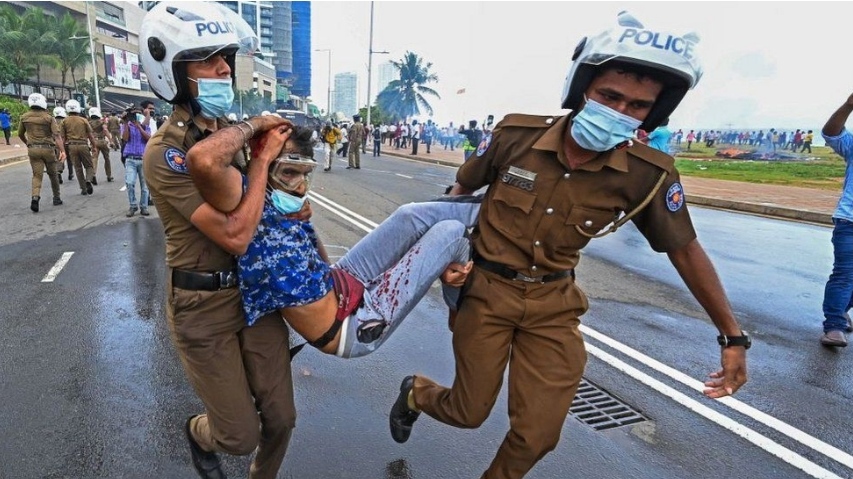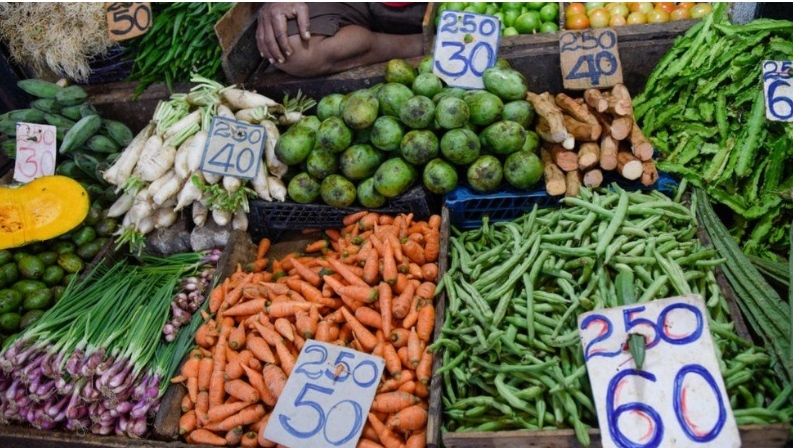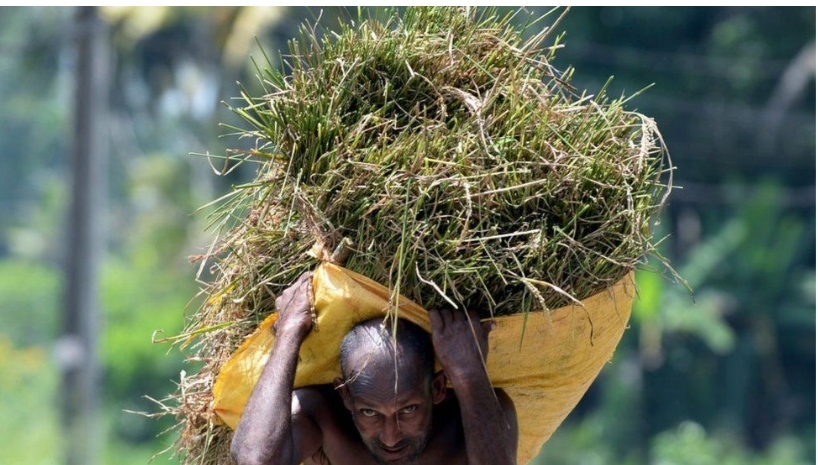Sri Lanka: Why is the country in an economic crisis?
By
Ayeshea Perera

Police take away a man injured in protests outside the president’s office in Colombo
Sri Lanka’s new prime minister has announced measures to tackle the island nation’s worst economic crisis since independence from Britain in 1948.
Ranil Wickremesinghe has said the country’s economic problems will get worse before they get better, and appealed for outside financial help.
Violent protests led to the resignation of former prime minister, Mahinda Rajapaksa, and other members of the government.
Why have people taken to the streets?
Protests over rising prices and shortages erupted in early April in the capital, Colombo, and spread across the country.
Food prices started rising in late 2021, and people are now paying up to 30% more for food than a year ago. This has forced many people to skip meals.
There have also been fuel shortages and power cuts, and a lack of medicines has brought the health system to the verge of collapse.
Why is Sri Lanka’s economy in crisis?
Sri Lanka’s foreign currency reserves have virtually run dry, and as it heavily reliant on imports, it can no longer afford to pay for staple foods and fuel.
The government blames the Covid pandemic, which affected Sri Lanka’s tourist trade – one of its biggest foreign currency earners. It also says tourists were frightened off by a series of deadly bomb attacks on churches in 2019.
However, many experts say economic mismanagement is to blame.
Much of the popular anger has been directed at the Rajapaksa family, who have held key government positions for several decades.
At the end of its civil war in 2009, Sri Lanka chose to focus more on its domestic markets instead of selling to foreign ones. So income from exports remained low, while the bill for imports kept growing.
Sri Lanka now imports $3bn (£2.3bn) more than it exports every year.

The cost of living has skyrocketed in Sri Lanka, with food costing up to 30% more than a year earlier
The government also racked up huge debts with countries including China, to fund what critics have called unnecessary infrastructure projects.
At the end of 2019, Sri Lanka had $7.6bn (£5.8bn) in foreign currency reserves.
However, by March 2020 its reserves had dwindled to only $1.93bn (£1.5bn). and recently the government said there was just $50m (£40.5m) at the country’s disposal.
Several populist policies have also been blamed for worsening the situation.
When he came to power in 2019, President Gotabaya Rajapaksa decided to offer big tax cuts, leaving less money to buy foreign currency.
Mr Rajapaksa now admits the tax cuts were a “mistake,” and Finance Minister Sabry has said they resulted in an estimated loss of more than $1.4bn (£1.13bn) in revenue.
When Sri Lanka’s currency shortages became a real issue in early 2021, the government tried to stop the outflow of foreign currency by banning imports of chemical fertiliser, telling farmers to use organic fertilisers.
This led to widespread crop failures. Sri Lanka had to supplement its food stocks from abroad, which made its foreign currency shortage even worse.
An IMF report in March this year said the fertiliser ban (reversed in November 2021) had also hurt tea and rubber exports, leading to “potentially substantial” losses.

The switch to organic fertilisers resulted in widespread crop failure, exacerbating foreign currency shortages
Since then, the government has banned the import of a wide range of “non-essential” items – from cars to certain types of food and even shoes.
The government also refused to let the Sri Lankan rupee fall against other currencies. It finally did so in March 2022, and the rupee fell more than 30% against the dollar.
Ranil Wickremesinghe, the new prime minister, has announced the government will have to print money in order pay salaries, which he says will lead to further depreciation of the rupee.
He’s also drawn up a plan to sell off the national airline in order to raise money.
How much foreign debt must Sri Lanka repay?
Sri Lanka’s government has racked up $51bn (£39bn) in foreign debt.
This year, it will be required to pay $7bn (£5.4bn) to service these debts, with similar amounts for years to come.
In April, the Sri Lankan government failed to make repayments totalling $78m. It was the first time Sri Lanka had defaulted on its foreign debts since independence.
Sri Lanka is seeking emergency loans of $3bn to pay for essential imports such as fuel.
The World Bank has agreed to lend it $600m. India has committed $1.9bn and may lend an additional $1.5bn for imports. It has also sent 65,000 tonnes of fertiliser and 400,000 tonnes of fuel, with more fuel shipments expected later in May.
The government is in talks about a bail-out from the International Monetary Fund (IMF). The IMF has said the government must raise interest rates and taxes as a condition for a loan, which would make the country’s cost of living crisis worse.
Sri Lanka owes $6.5bn to China and the two are in talks on how to restructure the debt.
China earlier agreed to bolster Sri Lanka’s foreign currency reserves by swapping the Lankan rupee for its currency, the renminbi. Since then, it has signalled its displeasure over Colombo approaching the IMF for help.




